Serendip is an independent site partnering with faculty at multiple colleges and universities around the world. Happy exploring!
Notes Towards Day 4 (Thursday, 9/12): What does play have to do w/ our mental life?

I. Coursekeeping
Introductions: look around: whose name don't you know? (ask and be educated)
Let's see how far we can get, going around, naming...
Mark's class will join us @ 12:15, so he can give us all instructions for our weekend jaunt.
On Sunday by midnight, your second 3-pp. paper is due, describing your trip into Philadelphia:
what can you say about playing in the city, based on your experience?
How has your sense of the city's possibilities (what you wrote last week) been altered by this trip?
How does your experience affirm/extend/challenge claims made by any of the theorists we've read?
(Don't do a checklist: pick one of them to enter into conversation with...)
The "upped ante" this week has to do with putting your experience
into dialogue w/ someone else's claims, and constructing an argument of your own.
We'll keep the same writing groups for next week (just for some continuity),
and then shift the week after (for some variety). By classtime on Tuesday,
read the essays written by the two others in your group, and do to them what
we did for today to Henig and Sunstein: write out the paragraph that has the most "weight,"
that interests you the most, that you want to enter and absorb...
What was it like, working w/ one another in writing groups? Helpful, not so?
We are trying to give you a variety of ways to "read," that go beyond/duck around
"I like this/don't like this," here's the problem w/ this essay, this is how you should fix it...
Oh! And! Abby's essay got a comment from the outside world...
(Rhonda Byrne...know her?...we have had moms show up in the past....)
Also discussed Amy and Hanna's Serendip issues w/ the webmaster...
(first one fixed, second one more of a challenge...stay tuned....!)
4:15-6, Mon, 9/16: Philadelphia sculptor Susan Hagen speaking in the HC Humanities Center
about four of her projects, including one called "Citizens (People of Philly),"
"an on-going project about ordinary people, many without homes, who make up the fabric of urban life."
III. Let's start today's discussion with our images of the city--
(discuss in groups of 3:)
Where is play?
Which of these scenes invite play?
What is play?
How might you recognize it?
III. What does it mean to "take play seriously"?
from your postings:
Cathy Zhou: there was little time for playing [in my childhood] since I was attending preschool classes and take piano, drawing, handwriting, taekwondo at the same time. They don’t want me to be left behind by other kids, and arranged a busy schedule for me.
Juneau: I loved reading about the scientific approach to play. Many researchers have come at the concept of play from different angles, and I like that none of them are definite…Aside from possibly improved flexibility in the brain, it is good to have fun, and to be active both physically and mentally in creative ways. As for brain development, I thought that the dark side of play was really intriguing.
nightowl: I really like the theoretical definition of A.D.H.D. as “overactivity of play urges in the nervous system” [but] Henig’s article didn’t answer almost any of the questions I wanted it to answer… Overall, it left me unsure of what to think…. play is hard to test [and] might be less of a question for science, but a question of common sense, “Look at life without play, and it’s not much life.”
Agatha: “… studies of play-deprived rats are so fascinating”…My problem isn't using animal testing as a means of searching for answers in science and medicine. My problem is using it in this context. Play. Children's play. Even adolescent and adult play… we are taking a thing such as leisure and fun and treating it in some morbid, science-fiction-y way to see if we are naturally programmed to desire play?.... “Imaginative play, even when it involves mucking around in the phantasmagoria, creates...an optimist, a creative thinker, a person who has a sense of power and control.” I think we should approach play and leisure with our own minds and brains, rather than with those of dead, lab-bred rodents – with which I, as a human being person, feel I have nothing in common – because the human race is not a science experiment. We need to stop freaking out about recess in schools or the change in playing patterns across generations and just remember we all have free-will and we should trust ourselves to manage free time in a way we feel is best for us. It doesn't need to be a world-wide debate. Just... relax.
IV. Reading aloud the paragraphs we copied from Henig's article--
(but first telling you why we are doing this!)
From Walter Benjamin's Reflections-- "One-Way Street": "The power of a country road is different when one is walking along it from when one is flying over it by airplane. In the same way, the power of a text is different when it is read from when it is copied out. The airplane passenger sees only how the road pushes through the landscape, how it unfolds according to the same laws as the terrain surrounding it. Only he who walks the road on foot learns of the power it commands, and of how, from the very scenery that for the flier is only the unfurled plain, it calls forth distances, belvederes, clearings, prospects at each of its turns like a commander deploying soldiers at a front. Only the copied text thus commands the soul of him who is occupied with it, whereas the mere reader never discovers the new aspects of his inner self that are opened by the text, that road cut through the interior jungle forever closing behind it: because the reader follows the movement of his mind in the free flight of daydreaming, whereas the copier submits it to command. The Chinese practice of copying books was thus an incomparable guarantee of literary culture, and the transcipt a key to China's enigmas (66).
V. What are we hearing....? what does play have to do with your mental life?
VI. How does this intersect w/ what Sunstein has to say about the "architecture of serendipity"
(vs. "the architecture of control"?)
VII. (12:15) Mark's leading us into the city...
Recognizing that the playground we live on and into which we will be travelling is an ancient land:
a) The geological play.

map made by Florence Bascomb (one of the first female geology Ph.D's in the U.S,
who created BMC's geology program): the blue rocks are 250 million years old;
the red/brown rocks are older than 450 million years...
there has been much wearing away since: no mountains here, but a rolling terrain

running unequally across the surface of the land, water always carves a valley,
and the deepest carvings become a stream valley
this map shows the drop off from harder to softer rock,
from that which is harder to remove to the mud and sand which becomes the lowland/coastal plain
this is a very important concept in the develoment of the eastern U.S.
since you can't sail a ship up the rapids....

the fall line (where all the streams run off the harder rock onto the coastal plain)
is where all the cities are located
"doodily, doodily, doodily....bonk!"
"every city is where it is because of the fall line"
we are elevated 320 ft. above sea level; a rise of 300' is predicted
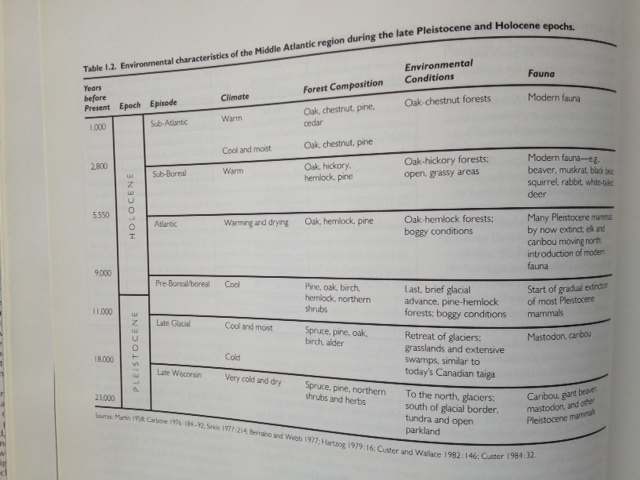
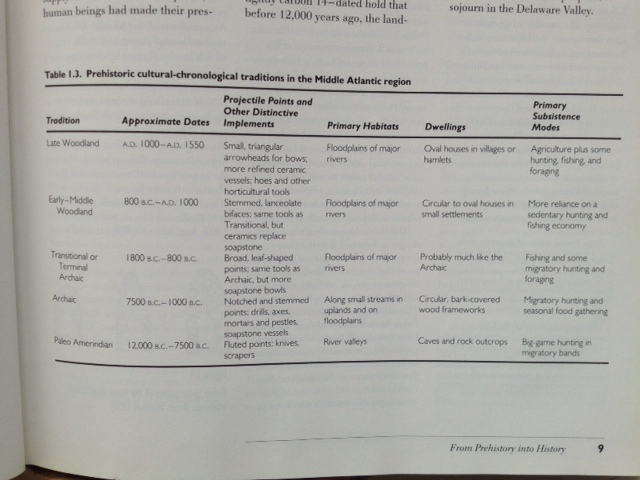
b) The unceded territory of the Lenape people, claimed for the British crown in the 16th century, given in 1681 by the King of England to William Penn to settle a bad debt, settled by him—as one of history’s first planned subdivisions. Penn was interested in acquiring land where the members of his radical religious sect, who were persecuted in Europe, could settle.
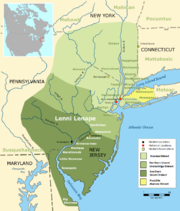
c) Penn was a pacifist and a real estate entrepreneur/philosopher. He founded Philadelphia as a “holy experiment” in which all its residents would be free to practice their own individual faiths. The free interplay of beliefs—which is harder to live than to imagine—is a playful conception of a playfully utopian idea.
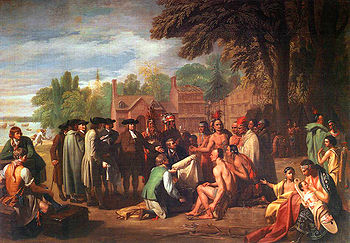
Benjamin West's 1771 painting of William Penn's 1682 treaty w/ the Lenape
d) Given 1. Two rivers. A city to be in the space between them. He imagined Philadelphia fully formed, planning the streets in what was then the ample space between the two rivers.
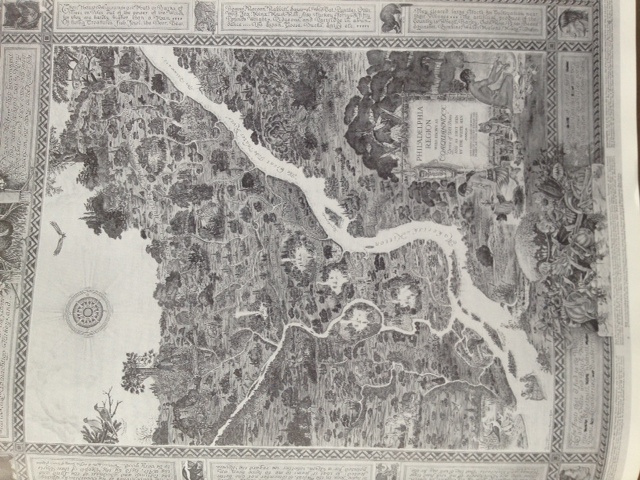
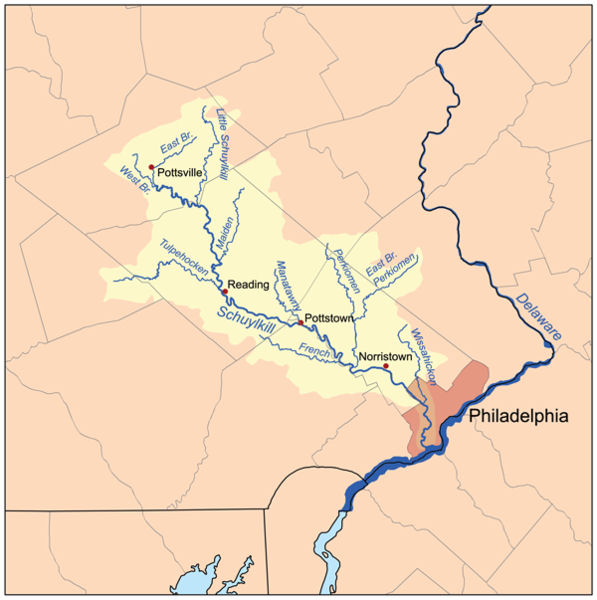
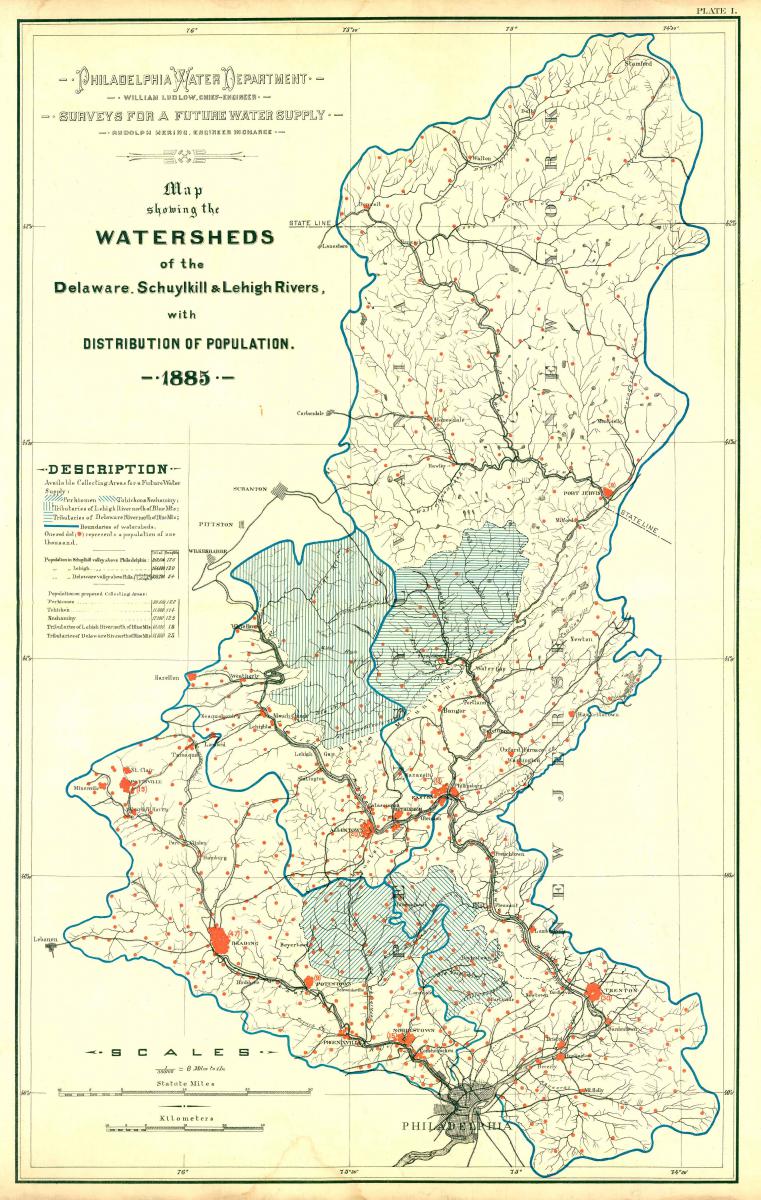
e) Given 2: 5 squares.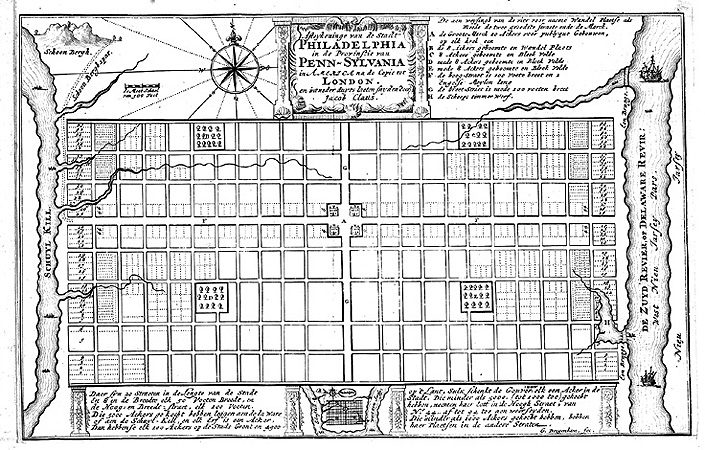
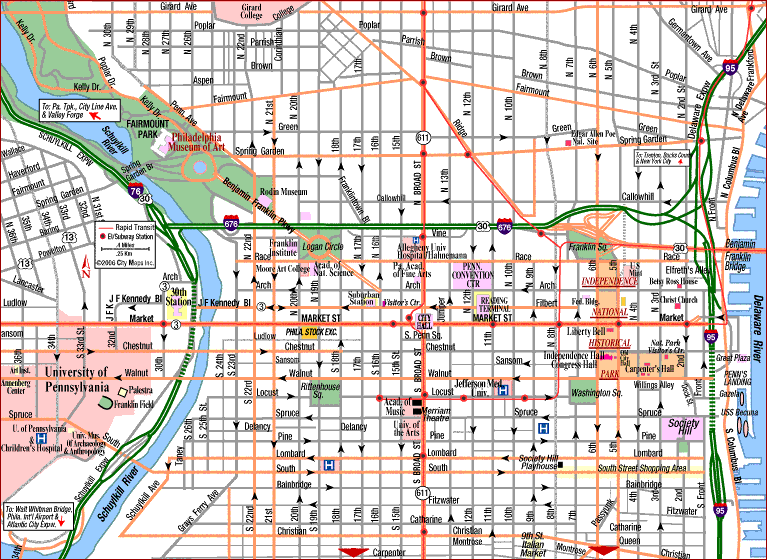
f) Given 3: A diagonal, from the Center Square, now city hall, to the NW square. In 1906/7, in an early effort at URBAN RENEWAL, the city imagined a diagonal street. IN 1917, in the time of the first world war, it was designed by a Frenchman to emulate the Champs Elysees in Paris. It runs from city hall—the top of which features a statue of William Penn which, from a certain angle, is playfully obscene—to the Philadelphia Museum of Art, a gorgeous Greek Revival “classical” building, built on the site of a former railroad locomotive factory.
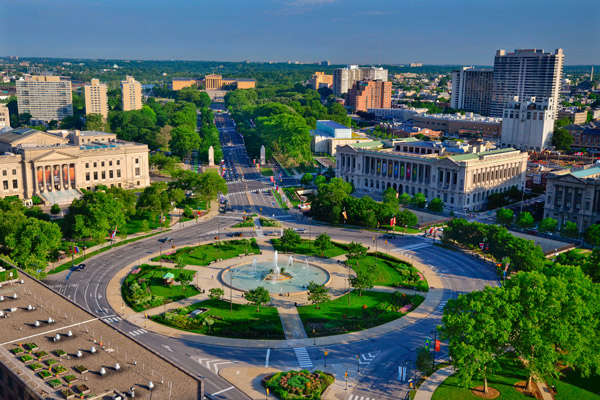
g) We will travel the MAIN LINE, the train line that was developed so that wealthy Philadelphians
could vacation a few miles outside the city.
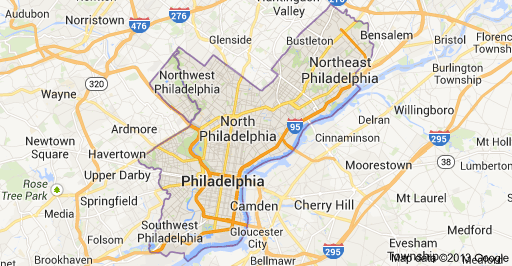
h) We will be attending a performance at the Free Library of Philadelphia. Philadelphia was the site of the first Free Library in the world, developed by Benjamin Franklin, an inventor, printer, writer, and signer of the declaration of independence—for whom the Parkway is named.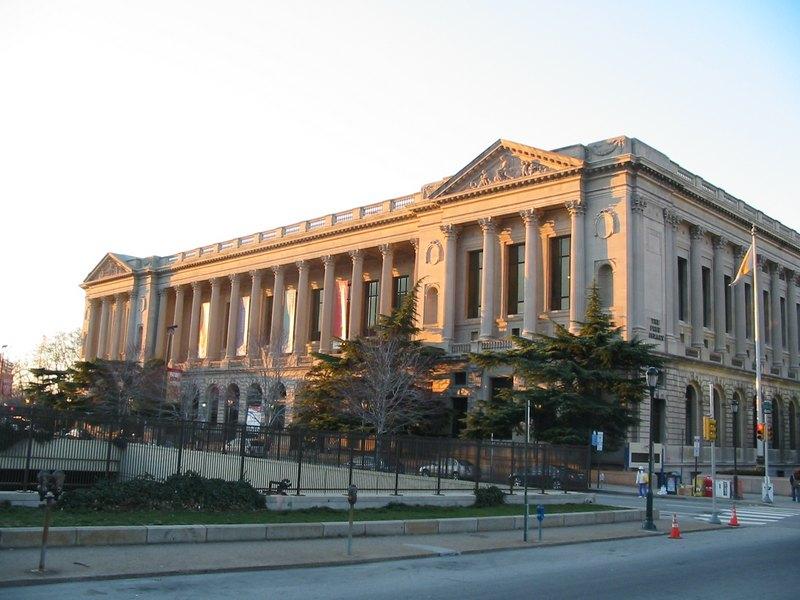
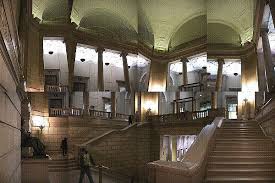
i) The FRINGE FESTIVAL is a vast network of hundreds of performances taking place all over the city. It has been going on for 17 years.
j) THE QUIET VOLUME is an investigation of drama of reading. It is not a play. You will be guided through an experience by recorded voices using an ipod. You will have a partner, probably one of your classmates.
CRUCIAL DETAILS>
WE MEET IN THE GLASS LOBBY OF GOODHART HALL SATURDAY MORNING AT 10am
We will walk to the train and depart at 10:24 am, arriving in PHILA at 10:50am.
We will see the show in groups of 2-4 in times spread out between 11:45am and 3:15pm.
During the time you are not in the performance at the Library, you are free to explore the Parkway with your partner (and others you may want to travel with). I will provide you with a map and a list of SOME of the sights/restaurants. There is lots of public art, fountains, etc. to explore. You should enjoy the Parkway neighborhood as you see fit. You can walk all over or sit and read a book. BUT YOU MUST BE AT THE LIBRARY 15 minutes before your show is scheduled to start.
WE WILL ALL ARRIVE BACK AT THE FREE LIBRARY at 4pm and will walk back to the train. I will put you on a train either at 4:49 or 5:19 or 5:49, depending on the leisureliness of our walk.
Current weather predictions for Saturday: Sunny in the 60s. That’s awesome crisp East coast college weather. Dress appropriately. Wear comfy shoes.
| Attachment | Size |
|---|---|
| cityscenes.docx | 4.88 MB |
| esemparkwayvisit2013.docx | 179.96 KB |


